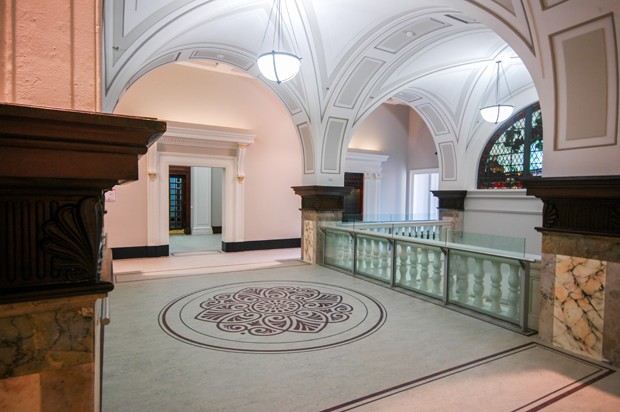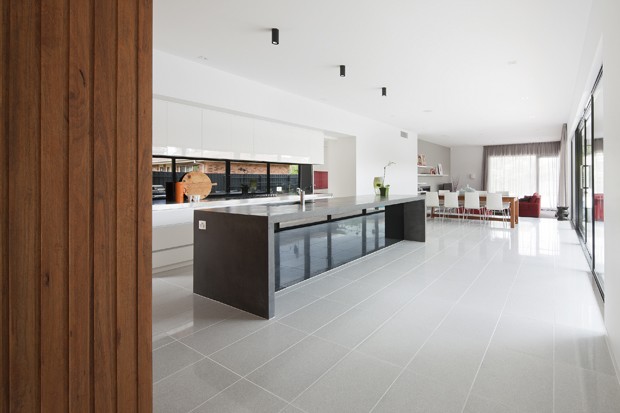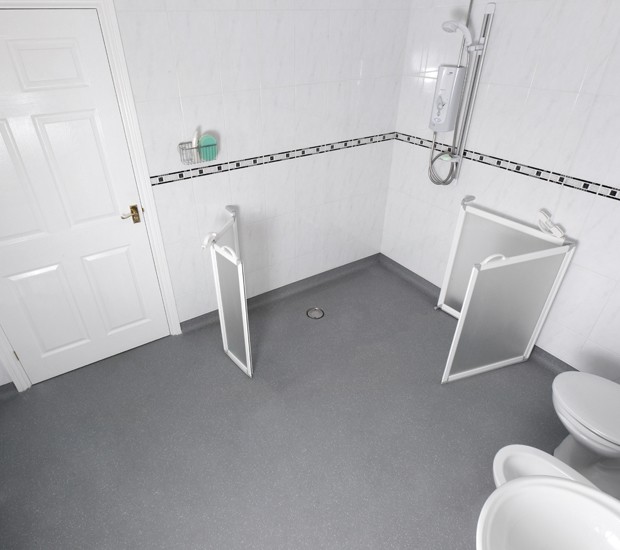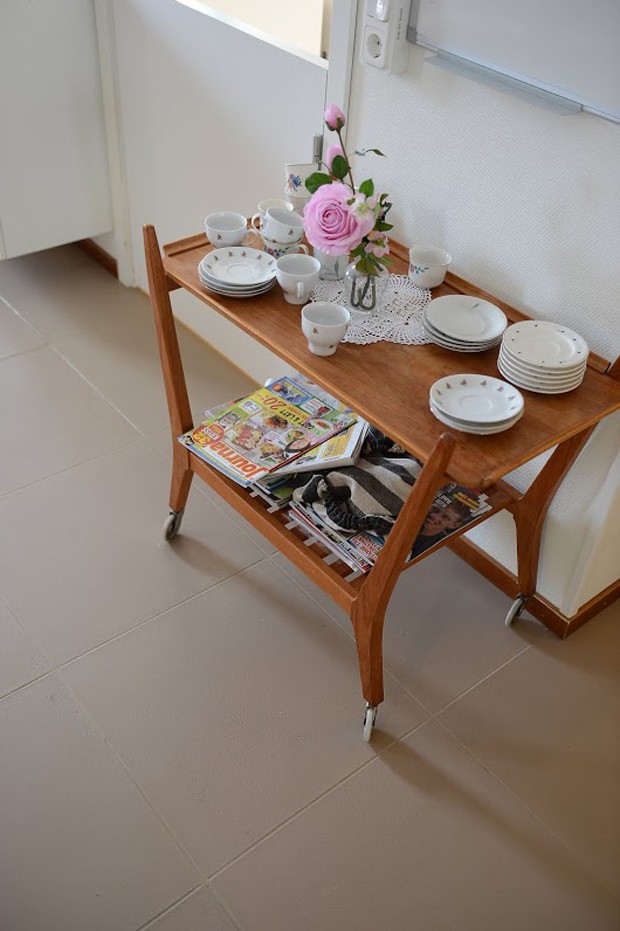Sticks and stones may break your bones…but slips and falls can too. Ensuring that people will be safe from slips, trips and falls in the spaces they occupy is an important part of the design process, with designers, manufacturers, contractors and architects having to specify floor products that comply with appropriate slip resistance levels.
But, what exactly are the most appropriate slip resistance levels?
“Most of the problems we have seem to revolve around people assuming that more slip resistance is better, but too much slip resistance can be worse,” says Intertile Research’s managing director Richard Bowman, who is also a keynote speaker at Australia’s inaugural Universal Design conference .
“It is important that one gets it just right – not too slippery, and not too slip resistant.”
Bowman notes that with this idea of specifying floors that are ‘just right’ – the ‘Goldilocks Principle’, specifying greater slip resistance might not be the most effective panacea.
“People want to live in safe homely environments, not with senselessly mandated semi-industrial flooring,” Bowman writes.
In Australia, the best way to ensure a floor is safe is to specify and install a material that meets or exceeds the current Australian Standards (AS), which refer to the slip resistance of a surface as the surface’s ability to reduce or prevent the risk of a person slipping.
This slip hazard is influenced by a range of factors, including the nature and function of the surface, its wear characteristics, footwear or the lack of; maintenance requirements, the presence of slopes, and environmental conditions such as exposure to water.

Brisbane City Hall Restoration by Tanner GHD. Image: Lachlan Rowe
With all these contributing elements, getting slip resistance right is invariably a complex issue. Tanner Kibble Denton Architects is one practice that has addressed the challenge of ensuring the floors are truly safe for pedestrians in their Brisbane City Hall Restoration project .
“The slip rating of the new marble floor finishes was difficult to confirm even though it had been specifically detailed in the tender documents,” practice director Megan Jones told A&D, adding that the specified natural Carrara tiles were required to have a slip resistance compliant to AS/NZS 4586.
Standards updates
The Australian slip resistance standards AS 4586 (slip resistance classification of new pedestrian surface materials) and AS 4663 (existing pedestrian surfaces) are the main benchmarks for the industry. However, updates were made in June 2013, which affect how products are being tested.
AS/NZS 4586:2013 specifies four test methods to determine the slip resistance of products:
-
Wet Pendulum Slip Resistance Test – P-rating: the test foot is now conditioned using a polishing film, which is a closer representation of a worn and polished heel, and smoother than the previously used rough sandpaper. This has made it harder to achieve ‘higher’ levels of slip resistance than previous revisions of the Standard. P0 materials have the least slip resistance, while P5 have the most.
-
Dry Floor Friction Slip Resistance Test – D-rating: no significant changes except for classification categories. D0 is used for surfaces measuring a Coefficient of Friction less than 0.40 and D1 for surfaces with a Coefficient equal to or greater than 0.40. This will eliminate confusion of previous classifications, whereby class F signified a pass, but was thought by many to be a fail.
-
Wet Barefoot Ramp Slip Resistance Test – A, B, C rating: no significant changes
-
Oil Wet Ramp Slip Resistance Test – R-rating: An inclining platform assesses the slip resistance of the material, with the test determining the angle of inclination at which safe walking no longer occurs on the test surface, which is coated with engine lubricating oil. Rating goes from R9 to R13, with R9 indicating the lowest slip resistance. Measurements do now allow for the use of brand Uvex shoes and new ST version of calibration boards in addition to the same shoes and test panels as the 2004 version.

Fibonacci Stone's Platinum Honed Bambra Road achieves a P4 rating
Michael Karakolis, Fibonacci Stone’s director, explains that these changes in testing have resulted in the need for new classifications coding that makes it clear that products meet the new standard. It has also meant that it is now harder to get a high slip resistance rating.
“When we regard a new surface this means that designers need to check products still meet the requirements for the environment they are specifying,” Karakolis adds.
Carl Strautins, a certified professional member of the Safety Institute of Australia and a representative on various Australian and UK Standards Committees, advises architects and designers to assess flooring to HB 198, which was released in June this year.*
"HB 198:2014 set out the parts of the Building Code of Australia (BCA) now known as the National Construction Codes (NCC) that require slip ratings in certain circumstances. It also outlines how to comply with the BCA," Strautins writes in an article for Floor Slip Test.
“Where the BCA is not applicable HB 198:2014 also outlines guidance as to what the general consensus is for slip ratings in public buildings. The slip ratings provided in the HB 198 include stair nosing’s, stair landings and pedestrian ramps. The guidelines provide those slip ratings to meet the BCA deemed-to-satisfy provisions.
"HB 198 also notes that there appears that an ongoing revision of a more comprehensive document HB 197 is being undertaken and that the standing of either or both handbooks will be decided at a later date."
Goldilocks Principle: more is not necessarily better
While a product might meet standards at the time of testing, slip resistance does change with time. For instance, a coarse, slip resistant limestone will get worn smooth by traffic and eventually become slippery.
Correct maintenance and cleaning of the product is therefore essential to prolonging the slip resistance of the flooring. At the same time, it can help to fulfil other ‘Duty of Care’ requirements, such as the preventing the risk of infections due to poor hygiene or lack of cleaning.

Altro's Aquarius Safety Flooring achieves a R10 and Class B to AS/NZS 4586 for barefoot use, and is easy to clean and maintain
Here, the fine balance of ‘not too rough, not too slippery’ flooring – the Goldilocks Principle – comes into play. Surfaces that have higher slip resistance than recommended may present hygiene and safety issues – it may be so rough that it introduces cleaning challenges and potential injury from falls, resulting in abrasions. Surfaces that are too rough can also trap contaminants.
Both cleaning and proper care should thus be considered at the design stage of the project (AS/NZS 3661.2), and Advanced Technology Testing and Research (ATTAR) suggests that there is little advantage in exceeding the recommendations for slip resistance if, as a consequence, cleaning and maintenance of the surface becomes impractical or unviable.
Other environmental risks must also be considered at the design stage, Karakolis says, including the pitch of sloping floors, and installation of handrails and doormats.

Charles Parsons' Kradal Tiles features a HealthGuard antimicrobial treatment which protects the surface against development of bacteria
*Editor's note: article updated to reflect the release of HB 198

